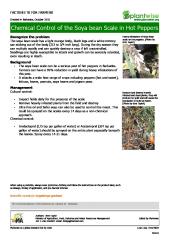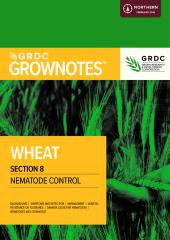A woody shrub that reaches only up to 4 m high upon maturity, Pigeon Pea or Cajanus cajan is grown in the tropics and subtropics for various uses. It is short-lived and believed to be one of the earliest of cultivated plants. It has deep tap roots hence it can tolerate drought and poor soil conditions. Edible parts of pigeon pea are the seeds, seedpods, leaves, and young shoots. Pigeon pea is as well known for its medicinal uses. Leaves are used as treatment of coughs, bronchitis, diarrhoea, haemorrhages, sores, and wounds. Diabetes and sore throats can likewise be treated using other plant parts of pigeon pea. Pigeon pea is planted as green manure. The stems are used as material in making baskets and in thatching. The wood is used in light construction.
Cajanus cajan is an evergreen Shrub growing to 4 m by 4 m at a fast rate.
It is hardy to zone 10. The flowers are pollinated by Bees, Insects. The plant is self-fertile.
It can fix Nitrogen.
Suitable for: light , medium and heavy soils, prefers well-drained soil and can grow in nutritionally poor soil. Suitable pH: acid, neutral and basic soils and can grow in very alkaline soils.
It cannot grow in the shade. It prefers moist soil and can tolerate drought.
Agroforestry Services: Alley crop Agroforestry Services: Crop shade Agroforestry Services: Nitrogen Agroforestry Services: Windbreak Fodder: Bank Fodder: Insect Global Crop as Annual Management: Coppice Management: Standard New Perennial Crop Other Systems: Homegarden Other Systems: Perennial fallow Staple Crop: Protein
Grows well in lowland tropical areas up to an elevation of 1,500 metres, though some forms can still do well up to 2,000 metres. Plants generally prefer a rainfall in the region of 500 - 1,000mm per year, though there are some cultivars that are adapted to wet, humid tropics so long as the soil is well drained. A temperature range of 20 - 30°c is preferred, but under optimal cultural conditions good yields can be obtained with temperatures up to 35°c. Grows best in a sunny position. Succeeds in a wide range of soils that are well-drained. Plants produce deep tap roots, they can succeed in poor soils and are extremely drought resistant once established. Dislikes very acid soils, growing best in a pH range of 5.5 - 6.5. A short-lived, woody plant, dying after 1 - 5 years. Harvesting of dwarf varieties can commence 5 months after sowing and continue for several months. A relatively low-yielding crop, yields of up to 5 tonnes per hectare of pods, or 1 tonne of seeds can be achieved. In perennial crops, 2 - 10 tonnes per hectare a year of woody stalks can be harvested for fuel. There are two main forms of this plant, and many named varieties of each. Var. Flavus DC. Is a moderate height plant that is early maturing, it is often grown as an annual in India. The green pods normally contain 3 seeds. Var. Bicolor DC. Is a taller plant that is later to mature and is usually grown as a perennial. The dark coloured pods contain 4 - 5 seeds. Short-duration dwarf cultivars are usually daylength neutral, but the taller growing cultivars are usually short-day plants that will not readily flower if day length is 12 hours or more. A good companion plant, it is often grown in association with other crops. This species has a symbiotic relationship with certain soil bacteria, these bacteria form nodules on the roots and fix atmospheric nitrogen. Some of this nitrogen is utilized by the growing plant but some can also be used by other plants growing nearby. The crop is cultivated on marginal land by resource-poor farmers, who commonly grow traditional medium- and long-duration landraces.
Habitatshowever
Habitatssometimes found in grassy habitats in savannahs
Habitatsshrubland and waste land.
Resources
Chemical control of the soya bean scale in hot peppers
FACTSHEETS FOR FARMERS
Cabi Plantwise Knowledge Bank
www.plantwise.org
Created in
Barbados
,
October
2012Chemical control of the soya bean scale in hot peppers

FACTSHEETS FOR FARMERSCreated in
Barbados
,
October2012
https://www.plantwise.org/KnowledgeBank/factsheetforfarmers/20147800101GrowNote Sunflower North 08 Nematodes
RESISTANT CROPS
GRDC
NORTHERN
SECTION 8
NEMATODE MANAGEMENT
FEBRUARY 2017
SUNFLOWER1 neMatoDe Control
seCtIon 8 SUNFLOWERS
February 2017GrowNote Sunflower North 08 Nematodes

RESISTANT CROPS
NORTHERN
SECTION 8
NEMATODE MANAGEMENT
FEBRUARY 2017
SUNFLOWER
1 neMatoDe Control
seCtIon 8 SUNFLOWERShttps://grdc.com.au/__data/assets/pdf_file/0023/370616/GrowNote-Sunflower-North…GrowNote Sunflower North 08 NematodesGrowNote Wheat North 08 Nematodes
BACKGROUND | SYMPTOMS AND DETECTION | MANAGEMENT | VARIETAL
GRDC
RESISTANCE OR TOLERANCE | DAMAGE CAUSED BY NEMATODES |
NEMATODES AND CROWN ROT
NORTHERN
SECTION 8GrowNote Wheat North 08 Nematodes

BACKGROUND | SYMPTOMS AND DETECTION | MANAGEMENT | VARIETAL
RESISTANCE OR TOLERANCE | DAMAGE CAUSED BY NEMATODES |
NEMATODES AND CROWN ROTNORTHERN
https://grdc.com.au/__data/assets/pdf_file/0030/370677/GrowNote-Wheat-North-08-…GrowNote Wheat North 08 Nematodes
Major pests
- Acanthoscelides flavescens
Acanthoscelides obtectus
Acanthoscelides zeteki
Aceria cajani
Adisura atkinsoni
Adoretus sinicus
Agallia albidula
Agrotis repleta
Alabama argillacea
Albonectria rigidiuscula
Aleurodicus dispersus
Amsacta moorei
Ancylostomia stercorea
Anoplocnemis phasiana
Anticarsia gemmatalis
Apate monachus
Aphis craccivora
Apion clavipes
Apomyelois ceratoniae
Asterolecanium pustulans
Balclutha abdominalis
Balclutha lineata
Bemisia tabaci
Callosobruchus chinensis
Callosobruchus maculatus
Carneocephala sagittifera
Cathartus quadricollis
Celosia argentea
Ceratocystis fimbriata
Cerotoma salvinii
Chionaspis minor
Choanephora cucurbitarum
Chrysodeixis eriosoma
Chrysodeixis includens
Clavigralla
Clavigralla elongata
Clavigralla gibbosa
Clavigralla scutellaris
Clavigralla tomentosicollis
Coccus longulus
Colaspis compta
Colaspis flavicornis
Colletotrichum lindemuthianum
Colletotrichum truncatum
Corticium koleroga
Corythuca gossypii
Cyclocephala amazona signata
Cydia nigricana
Cyphonia clavata
Diabrotica laeta
Diaphania indica
Diaprepes famelicus
Dioxyna sororcula
Diphaulaca viridipennis
Diplodia cajani
Disonycha glabrata
Duplaspidiotus subtesseratus
Echinochloa crus-galli
Edessa meditabunda
Elasmopalpus lignosellus
Empoasca fabalis
Empoasca hastosa
Enchenopa ignidorsum
Erythricium salmonicolor
Euphorbia hirta
Exelastis atomosa
Exitianus atratus
Ferrisia virgata
Frankliniella insularis
Frankliniella schultzei
Fundella pellucens
Fusarium oxysporum f.sp. vasinfectum
Fusarium pallidoroseum
Gibberella avenacea
Gibberella indica
Gracilaria similatella
Helicotylenchus dihystera
Helicoverpa armigera
Helicoverpa punctigera
Helicoverpa zea
Heliothis virescens
Heterodera cajani
Heterodera vigni
Heterotermes convexinotatus
Hieroglyphus banian
Hoplolaimus seinhorsti
Hortensia similis
Howardia biclavis
Icerya montserratensis
Icerya samaraia
Jacobiasca lybica
Lachnosterna jamaicensis
Lampides boeticus
Leptopharsa machalana
Liriomyza sativae
Litostylus strangulatus
Loberus testaceus
Maconellicoccus hirsutus
Macrophomina phaseolina
Maruca vitrata
Megalotomus rufipes
Megalurothrips distalis
Megalurothrips sjostedti
Megalurothrips usitatus
Melanagromyza chalcosoma
Melanagromyza obtusa
Membracis tectigera
Menoetius curvipes
Mesophleps palpigera
Microtermes
Mylabris pustulata
Myzus persicae
Nipaecoccus nipae
Oedionychus decimguttatus
Oligonychus pratensis
Omiodes diemenalis
Omoplata marginata
Oncideres amputator
Oxycetonia versicolor
Parasaissetia nigra
Passalora cajani
Patanga succincta
Phakopsora pachyrhizi
Phoma cajani
Phoma sorghina
Phyllophaga
Phyllophaga hogardi
Phyllosticta cajani
Physalospora cajanae
Phytophthora cryptogea
Phytophthora drechsleri f.sp. cajani
Piezodorus guildinii
Pigeon pea witches' broom phytoplasma
Pigeon Pea Yellow Mosaic Virus
Pigeonpea sterility mosaic virus
Pinnaspis strachani
Pityophthorus xylotrupes
Planococcus kenyae
Pococera atramentalis
Pratylenchus
Pratylenchus brachyurus
Pratylenchus penetrans
Prepodes quadrivittatus
Promecops lunatus
Protaetia fusca
Rhinacloa forticornis
Rhizobium radiobacter
Rhizobium rhizogenes
Rhizoctonia ferruginea
Rhyssomatus nigerrimus
Richardia brasiliensis
Riptortus
Rivellia angulata
Rotylenchulus
Rotylenchulus reniformis
Saissetia coffeae
Saissetia oleae
Schistocerca gregaria
Sphenarches anisodactylus
Sphenarches caffer
Spilarctia obliqua
Stirellus bicolor
Sunn-hemp mosaic virus
Systena s-littera
Tanaostigmodes cajaninae
Thysanoplusia orichalcea
Trogoderma anthrenoides
Urbanus proteus
Uredo cajani
Uromyces appendiculatus
Uromyces dolicholi
Vanduzeea punctipennis
Xanthomonas axonopodis pv. cajani
Minor pests
- Achatina fulica
Alfalfa mosaic virus
Amrasca biguttula biguttula
Anoplophora chinensis
Aphasmatylenchus straturatus
Aphis fabae
Aproaerema modicella
Aspergillus niger
Athelia rolfsii
Bean golden mosaic virus
Callosobruchus analis
Candidatus Phytoplasma asteris
Coccidohystrix insolita
Cochliobolus lunatus
Corcyra cephalonica
Cuscuta campestris
Dactyloctenium aegyptium
Diaporthe phaseolorum var. meridionalis
Diaprepes abbreviatus
Diaprepes spengleri
Etiella zinckenella
Gibberella acuminata
Globisporangium irregulare
Glomerella cingulata
Heterodera glycines
Holotrichia serrata
Hoplolaimus indicus
Icerya aegyptiaca
Icerya purchasi
Icerya seychellarum
Kerria lacca
Lasiodiplodia theobromae
Leveillula taurica
Melanagromyza sojae
Meloidogyne acronea
Meloidogyne hapla
Mesoplatys ochroptera
Mungbean yellow mosaic virus
Mythimna separata
Nezara viridula
Ophiomyia centrosematis
Ophiomyia phaseoli
Paracoccus marginatus
Phakopsora meibomiae
Phenacoccus madeirensis
Piezodorus hybneri
Planococcus citri
Pseudococcus jackbeardsleyi
Pseudomonas savastanoi pv. phaseolicola
Pulvinaria psidii
Rastrococcus iceryoides
Rosellinia pepo
Scutellonema bradys
Scutellonema clathricaudatum
Sinoxylon conigerum
Spodoptera frugiperda
Thrips hawaiiensis
Thrips imaginis
Thrips tabaci
Tobacco streak virus
Tribulus terrestris
Tylenchorhynchus claytoni
Urd bean leaf crinkle virus
